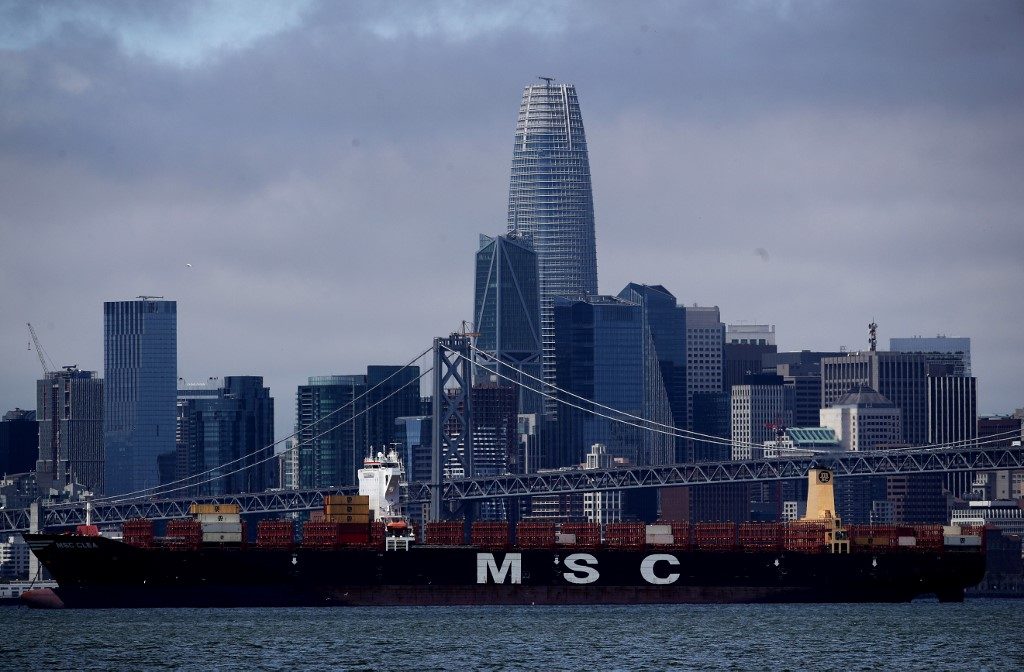SUMMARY
This is AI generated summarization, which may have errors. For context, always refer to the full article.

WASHINGTON, USA – The World Bank slashed its global growth forecasts for this year in a report released Tuesday, June 4, that portrayed a world gripped by deepening trade conflict, tumbling confidence, and increasingly skittish investment.
Although the global development lender currently expects a modest recovery 2020 and 2021, the bank said in its semi-annual report that a lot will have to go right for this to happen.
Instead the growing risks suggest the outlook could instead grow darker still.
The greatest danger on the horizon is the prospect of worsening trade clashes between major world economies – a specter that rose again last week when US President Donald Trump announced fresh punitive duties on Mexican goods in a dispute over immigration policy.
The world economy is now expected to expand by 2.6% this year, three-tenths of a percentage point lower than the January forecast, and well below the 3% growth seen in 2018, according to the Global Economic Prospects report.
The World Bank also sounded the alarm about rising debt levels and warned emerging economies they could soon regret the decision to borrow in search of a growth boost.
Newly-installed World Bank President David Malpass, who in his previous position with the US Treasury participated in Trump’s stalled trade negotiations with China, said global growth is “fragile” and the slowdown jeopardizes progress in battling world poverty.
“The global economic outlook, in both the near and long term, is confronting substantial challenges,” he told reporters.
The new forecast was decidedly gloomier than the latest outlook by the International Monetary Fund, released in April, but which likewise predicted a slowdown and warned of the risks posed by trade conflicts.
“The bottom line is that the global economy is coming to a crossroads,” World Bank economist Ayhan Kose, who oversaw the report, told Agence France-Presse.
“We need to find ways to stabilize growth and I think further escalation of these trade tensions is now the number one risk that could actually weigh on the outlook,” he said.
World trade volume also is expected to drop off sharply, growing by 2.6% this year, the slowest pace since the global financial crisis and a full percentage point lower than January’s forecast.
‘Panic button?’
In East Asia and the Pacific, total economic output is likely to drop below 6% for the first time since the Asian financial crisis more than 20 years ago.
China’s forecast is little changed, with growth projected to slow to 6.2% this year.
The forecast for the United States is unchanged, with gross domestic product growth slowing to 2.5% this year before weakening to 1.7% in 2020, though still considerably stronger than other advanced economies.
But American exports to Europe and Asia have seen an “especially acute” slowdown, and economic conditions in the eurozone have “deteriorated rapidly” as exports to China, central Asia, and elsewhere have shrunk, according to the report.
Latin America’s top two economies, Brazil and Mexico, have taken sharp turns for the worse.
The report did not take Trump’s latest tariff threat against Mexico into account – it was announced Friday, May 31, and is due to take effect June 10 – but the World Bank cut the forecast by 0.3 points, calling for expansion of just 1.7% in 2019.
If Trump follows through on his threat, tariffs on all Mexican goods would hit 25% in October.
“The big question is, are we pushing the panic button?” Kose said.
“The answer at the moment is no, but I think if tensions escalate further, we have to push the panic button and get ready for a much deeper slowdown.”
The forecast also sliced 0.7% off its outlook for Brazil, cutting it to 1.5%.
Kose highlighted concerns over rising debt, saying that since 2007 sovereign debt among emerging and developing economies had risen on average by 15%.
These countries should be “extremely careful” not to allow current low interest rates to entice them into overindulging in more debt, and should instead opt for more reforms that can stimulate investment.
“When you accumulate debt, it makes you more vulnerable to crisis, it limits your policy space and then ultimately, you never know when the interest rate’s going to increase,” he said. – Rappler.com
Add a comment
How does this make you feel?
There are no comments yet. Add your comment to start the conversation.